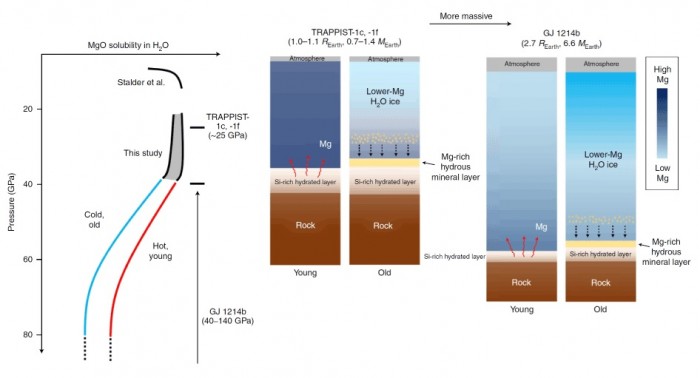“Atomic-scale mixing between MgO and H2O in the deep interiors of water-rich planets.”
- Authors
T. Kim, S. Chariton, V. Prakapenka, A. Pakhomova, H.-P. Liermann, Z. Liu, S. Speziale, S.-H. Shim, Y. Lee*
- Journal
Nature Astronomy
Vol.5, pp.815-821, 2021.08 - DOI
Abstract
Water-rich planets exist in our Solar System (Uranus and Neptune) and are found to be common in the extrasolar systems (some of the sub-Neptunes). In conventional models of these planets a thick water-rich layer is underlain by a separate rocky interior. Here we report experimental results on two rock-forming minerals, olivine ((Mg,Fe)2SiO4) and ferropericlase ((Mg,Fe)O), in water at the pressure and temperature conditions expected for the water-rich planets. Our data indicate a selective leaching of MgO, which peaks between 20 and 40 GPa and above 1,500 K. For water-rich planets with 1–6 Earth masses (>50 wt% H2O), the chemical reaction at the deep water–rock interface would lead to high concentrations of MgO in the H2O layer. For Uranus and Neptune, the top ~3% of the H2O layer would have a large storage capacity for MgO. If an early dynamic process enables the rock–H2O reaction, the topmost H2O layer may be rich in MgO, possibly affecting the thermal history of the planet.












